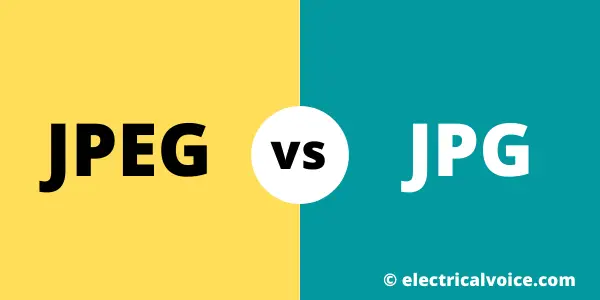We wish to preserve the divine moments of our lives forever. What better way to cherish these moments than to click a picture. Each photograph narrates its own story of happiness, sadness, anger or love. Some regular image formats are PNG, JPEG, JPG, RAW and many more. So what makes these different from one another? In this article, we will see the difference between JPEG and JPG.
Statistically, humans would click an average of 1.4 trillion photographs in a year. This isn’t surprising at all, as necessarily anyone with a phone can use a camera to click a picture at any possible moment. Photography is a passion for many youths today. The drive and need to capture the right moment is intoxicating and requires a lot of patience. Thousands of pictures of possibly the same emotion are captured by many, so the question is what makes every photo different or what makes a photograph best?
When we click a picture we don’t worry about which format suits us best. We simply click for our memories. However, when we use a photograph for commercial uses, it is an image. Not only does the size or quality of file matter but the format of the image matters too. One need not be an expert to relatively tell which extension would be best supported on various platforms. So get ready to be enlightened on the most common formats we use every day unknowingly.

JPEG vs JPG
Most images we click on, on the internet are formatted as jpg or jpeg (of course png and gifs are very common too). jpeg and jpg are file extensions. They are extremely similar which makes it difficult to tell them apart. They are the most common and are used widely on the internet. What makes them recurrent is that they are of smaller size as compared to others.
jpeg and jpg are children of the same company Joint Photographic Experts Group. This is abbreviated as JPEG, while JPG is the three-letter abbreviation of the same term. The only visible difference to us is the missing ‘E’. JPEG (pronounced as jay-peg) can in simple terms be defined as a standard graphics file format for compressing images by disposing of redundant pixels. These are found commonly on the world wide web. It is a bitmap compression format generally used for lossy compression.
jpg and jpeg are raster images i.e. they are made of grids of pixels coming together coded to a specific colour or gradation.
As stated earlier, jpeg and jpg are not different from each other. These have the same features and developed by the same parent company. The only variation is that jpeg is a newer version. In olden times, jpg was the dominant format. It was best to use for downloading smaller size images from the internet. Windows at that time supported only 3-letter file formats. So all older versions of windows still to date use jpg. These are not handy to use anymore on any new smart devices or laptops.
When windows evolved the 3-letter restriction was dismissed and multi-letter extensions came to picture which thus formed the new jpeg file format. New versions of the program save the images in jpeg format habitually.
Though windows had these restrictions, Linux or Mac didn’t. So .jpg and .jpeg were used parallelly as per need.
Both jpg and jpeg format provides faster opening speeds and less clarity. They can’t be used aptly for texts as they make them look fuzzy most of the time.
jpg is more common and prominent thus making it more popular than jpeg. jpg saves images with a very small size, at times by comprising the quality. This is not visible to the naked eye thus it doesn’t bother most of the time. However, nowadays, there is a high probability that we might be using jpeg without even realising it.
There is a chance that quality is compromised due to all the reduction or amplification in case of both jpg and jpeg but jpeg updates provide the user to customize according to his own needs. The balance between the size of storage and quality can be handled. The degree of compression can be modified but since its lossy compression, some quality is lost certainly.
Now if an older computer downloads an image of a .jpeg extension then it automatically shrinks to .jpg format to avoid abnormalities. Though jpg is a popular trend, the modern OS tends to download the image with .jpeg extension.
It is easy to convert from jpeg to jpg or vice versa with all the tools available on the internet.
So choose your format wisely. If quality matters to you, jpeg and jpg won’t be your choice. However, for faster speed and smaller size then jpeg should be your go-to choice. Considering all the confusion related to jpg vs jpeg, hope this article clears your doubts.
Author
Shriya Upasani
MIT World Peace University
